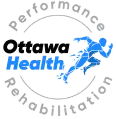When it comes to addressing posterior tibial tendon dysfunction, Ottawa Health Performance and Rehabilitation is your go-to partner. We focus on evidence-based strategies to enhance stability and mobility, customizing treatments to suit your individual needs and guiding you through your recovery process in Ottawa.
Understanding the Basics of Posterior Tibial Tendon Dysfunction
Posterior tibial tendon dysfunction (PTTD) is a condition that affects the tendon responsible for supporting the arch of your foot. This can result in pain, swelling, and a gradual flattening of the foot, making walking or standing uncomfortable. Often caused by overuse, PTTD can worsen without treatment, underscoring the importance of early intervention.
Recognizing Symptoms and Their Effects
The symptoms of PTTD can progress from mild discomfort to severe limitations in mobility:
- Foot and Ankle Pain: Pain along the inner side of the foot and ankle that intensifies with activity and spreads to the arch and heel.
- Swelling and Heat: Swelling, warmth, and redness around the inner ankle, indicating inflammation.
- Foot Deformity: The collapse of the foot arch, leading to flatfoot and changes in walking patterns.
- Walking Challenges: Difficulty walking, running, or standing for extended periods due to the loss of the foot’s arch.
Factors Contributing to Posterior Tibial Tendon Dysfunction
Several elements play a role in the development of PTTD , including:
- Overuse: Repetitive activities that strain the tendon, common in athletes and certain professions.
- Injury: Ankle sprains or direct tendon trauma can trigger dysfunction.
- Age and Gender: More prevalent in older adults and women compared to men.
- Obesity: Excess weight can stress the tendon further.
- Underlying Health Conditions: Diseases like diabetes and hypertension can elevate the risk of PTTD.
Customized Physiotherapy Plans for PTTD
At Ottawa Health: Performance and Rehabilitation, our PTTD treatment strategies are carefully tailored to address your specific requirements, focusing on pain relief, function restoration, and prevention of worsening symptoms.
Comprehensive Evaluation Process
We begin with a thorough assessment of your foot’s condition, evaluating the severity of dysfunction and its impact on your mobility and daily life.
Specialized Treatment Approaches
Our targeted interventions include:
- Personalized Exercise Regimens: Exercises to strengthen foot-supporting muscles, enhance arch support, and reduce tendon stress.
- Hands-On Therapy: Techniques to alleviate pain, decrease inflammation, and improve foot and ankle mobility.
- Guidance on Lifestyle and Activities: Recommendations for modifying activities to prevent exacerbation of the condition and tips for weight management if needed.
Comprehensive Care Services
Aside from our expertise in PTTD treatment, the Ottawa Health: Performance and Rehabilitation team offers a wide array of services to boost your overall health and mobility. Our skilled professionals are committed to delivering holistic care, from injury prevention to recovery and beyond.
- Physiotherapy Clinic
- Chiropractic Care
- Custom Orthotic Insoles
- Massage Therapy
- Cupping Therapy
- Shockwave Therapy
- Lumbar Spinal Stenosis Care
- Physiotherapy for Car Accidents
- GLA:D Physiotherapy
- Holistic Nutrition Planning
Choose Ottawa Health: Performance and Rehabilitation for Personalized Care
Opting for Ottawa Health: Performance and Rehabilitation for your Ottawa-based posterior tibial tendon dysfunction treatment means selecting a team dedicated to your well-being and recovery. Our skilled team, innovative treatments, and client-centered approach ensure you receive top-quality care and assistance throughout your recovery journey.
Our Promise:
- Committed Professionals: Our team is devoted to your recovery, offering individualized care and assistance.
- State-of-the-Art Treatments: We employ cutting-edge physiotherapy methods and technology to create a tailored treatment plan.
- Comprehensive Healing: Our focus is on complete recovery, addressing both symptoms and underlying causes of PTTD.
Embark on Your Journey to Recovery
If posterior tibial tendon dysfunction is impacting your life in Ottawa, let Ottawa Health: Performance and Rehabilitation guide you through the initial stages of recovery. Contact us today to begin a treatment plan designed specifically for you and rediscover your strength and mobility.
Relief for Common Ankle Conditions
|
|
FAQs on Posterior Tibial Tendon Dysfunction Treatment in Ottawa
How Can Lifestyle Changes Aid in Managing PTTD?
Implementing lifestyle changes can significantly contribute to managing PTTD and preventing further deterioration. Maintaining a healthy weight can reduce tendon strain, while low-impact exercises like swimming or cycling can help maintain fitness without stressing the foot. Choosing supportive footwear with adequate arch support and avoiding high heels or unsupportive shoes is crucial. Modifying activities to reduce tendon stress can help manage symptoms and slow PTTD progression.
What Is the Recovery Timeline for PTTD Treatment?
The recovery duration for PTTD treatment varies depending on the condition’s severity and the chosen treatment plan. Physiotherapy may show improvement within weeks, but complete symptom resolution can take several months. Full recovery typically spans 6 months to a year, during which gradual return to normal activities occurs while following a personalized physiotherapy regimen to regain strength and function.
Are There Specific Exercises for PTTD Rehabilitation?
Yes, targeted exercises are crucial for PTTD recovery, aiming to strengthen arch-supporting muscles, enhance ankle stability, and reduce the risk of further injury. Toe curls, heel raises, and arch lifts can strengthen the posterior tibial tendon and its supporting muscles. Balancing exercises can enhance proprioception, reducing injury risk. It’s essential to perform these exercises under professional guidance to ensure correct execution and prevent aggravating the condition.
How Do I Select Appropriate Footwear for PTTD?
Choosing suitable footwear is vital for managing and treating posterior tibial tendon dysfunction. Opt for shoes with ample arch support and cushioning to reduce tendon strain and stabilize the foot. A firm heel counter can control rearfoot movement, crucial for PTTD patients. Custom orthotics may be recommended for additional support. Avoid high heels or unsupportive shoes, as they can worsen symptoms. Seek advice from a healthcare professional for footwear tailored to your specific needs.
Ottawa Health: Performance and Rehabilitation
1535 Bank St, Ottawa, ON K1H 7Z1, Canada
(613) 728-9414
Hours:
Monday to Thursday: 8 AM – 7:30 PM
Friday: 8 AM – 8 PM
Saturday: 10 AM – 2 PM
Sunday: Closed

